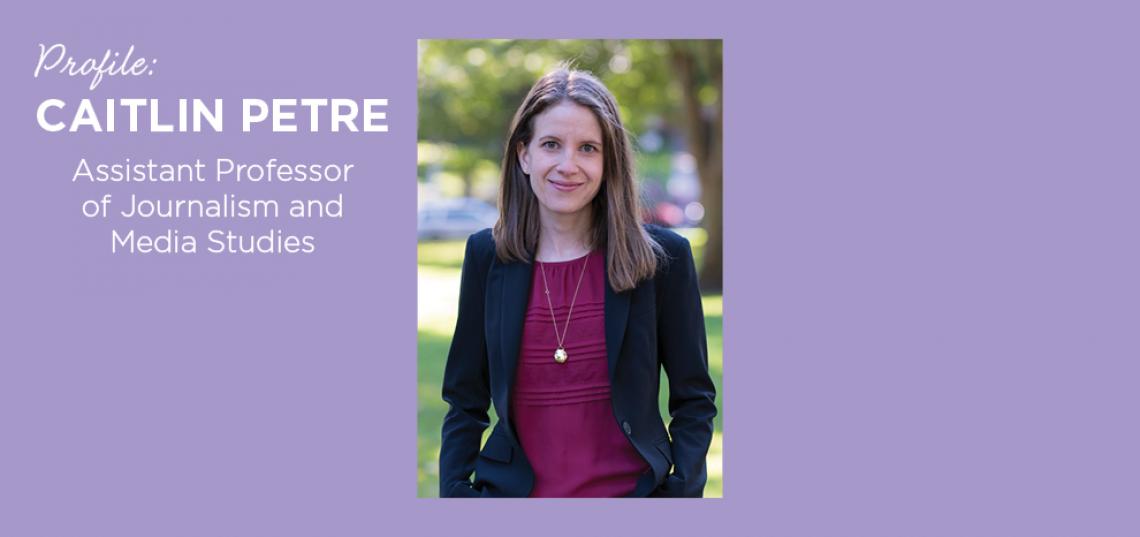
Caitlin Petre, whose research examines interactions between people and algorithms, joined the School of Communication and Information (SC&I) in 2017 as an assistant professor in the Journalism and Media Studies Department.
“I’d had my eye on Rutgers for a long time as a place where I would love to be, and I was excited to get to come here,” Petre said. “If you had told me in the middle of graduate school that I would end up at Rutgers, I would have been very happy.”
Petre is currently working on a book that analyzes the influence of audience metrics on the news industry and the working conditions of digital journalists. “The premise of the book is that within the last 15 years, journalists have been confronted with a lot more information about their audiences than was available to them previously, such as who is reading their articles, how many people are reading, and how much time people are spending on articles. I was really interested in how that was changing the journalism field -- and what the case of journalism might tell us about the role of performance analytics in the contemporary workplace more broadly,” Petre said.
To understand how news analytics are created, interpreted, and put to use, she has conducted ethnographic research and interviews at major media companies such as the New York Times and Gawker Media, as well as Chartbeat, a leading news analytics company.
Petre earned her Ph.D. in sociology at New York University, but her interest in researching changes in media industries began years before that, when after college she worked at a public relations firm.
“Before I went to graduate school,” Petre said, “I worked at a strategic communication firm whose clients were progressive non-profit organizations. A lot of my job was doing media relations for these non-profit organizations, calling up journalists and trying to pitch them stories on the work our client organizations were doing.”
In the process of trying to convince reporters to pick up her clients’ stories, Petre became interested in wanting to reverse-engineer their news judgment. She said, “I was very curious about how reporters made decisions about what should be covered, what they consider newsworthy and why they considered it newsworthy. When I got to graduate school, there was an opportunity to study it more in depth, and so I did. It became increasingly clear that one of the main determining factors was metrics, and that’s what led to my research.”
In college, Petre studied philosophy, and today, she explained, elements of what she learned as an undergraduate philosophy student inform her research and writing style. “In analytic philosophy there’s a lot of emphasis on rigorous, logically coherent argument. You try to be explicit about the analytical steps taken to get to the conclusion that you want to convince the reader of. I still strive for that kind of clarity in my writing.”
Petre’s research on the role of metrics in the news media field has been deeply influenced by her graduate training in sociology. “As a scholar I am fascinated by the social life of digital data and algorithms,” she explained. “There is a growing understanding that there is no such thing as raw data -- that is, data doesn’t speak for itself. We know that data needs to be interpreted by human beings to draw insight from it, and in order to then make decisions based on it. But it’s one thing to know that there is human involvement in shaping algorithms and it’s another thing to actually see what that looks like in various settings, and what the social consequences are of the constant push-pull between human and algorithm. That’s where ethnographic and interview-based research of the sort I do can make a contribution.”
In the next 5 years, Petre hopes her book will be published, and she plans to continue exploring the interplay between algorithms and human judgment and decision-making.
For more information about the Journalism and Media Studies Department at SC&I, please click here.
